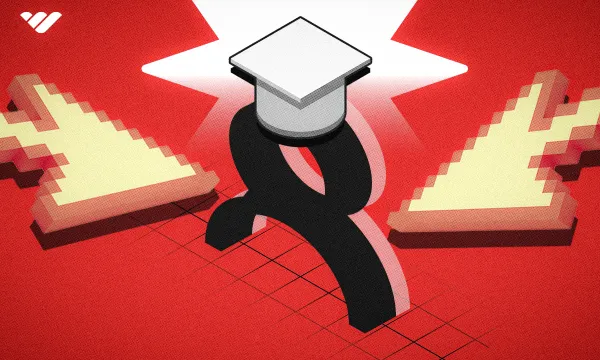With a growing number of content creators able to make a living from their passion, the desire to become a content creator has never been bigger.
But if you want to become a content creator yourself, it’s time to dig a little deeper. It’s time to understand the cogs and wheels of the content-creating industry. It’s time for a deep dive!
This blog will look at what’s available and what it takes to get started - with lots of examples thrown in for good measure.
What is a Content Creator?
A ‘content creator’ is someone who creates and shares content consistently. They do so for entertainment, education, inspiration, or social connection purposes.
A content creator's work targets specific niches and audiences. Creators can use various formats and platforms, such as TikTok reels, YouTube videos, or podcasts.
Now that you know what a content creator is, let's take a look at the current creator landscape.
How many content creators are there in 2024?
Out of the world’s 4.2 billion social media users, there are currently estimated to be around 200 million content creators.
The content creation output is vast. In the time you take to read this article, 1.2 billion TikTok reels will have been viewed, 1.3 billion Instagram photos will have been shared and over 880 million Facebook Lives will have been watched.
What's the average age of a content creator?
- Average Age: 34.4 years old.
- 20-30 years old: 23%
- 30-40 years old: 43%
- 40 years old: 34%:
How many content creators are professional?
- Recreational (0 to 1k followers): 23 million.
- Semi-Pro (1k to 10k followers): 139 million.
- Professional (10k to 100k followers): 41 million.
- Expert (100k to 1 million followers): 2 million.
- Mainstream (1 million + followers): 2 million.
Four Key Types of Content Creators
As the content creator landscape is so broad, creators can take many forms - here are four of them.
Social media influencers
Simply put, an influencer is someone who can influence the interests, behavior, and spending of their viewers.
They usually have a passionate following that will be eager to follow their lead. The type of content that influencers produce can vary widely, but typically it includes personality-based profiles that showcase their lives, like a student sharing their college journey or a makeup enthusiast filming makeover tutorials.
Influencers make their money via paid ads, affiliate links, and sponsorships. They also tend to receive gifts and trips, in exchange for a favorable review.
Take, for example, Kayla Itsines. As a fitness influencer with over 15 million followers on Instagram, Kayla promotes her training programs and collaborations with apps and sports equipment.
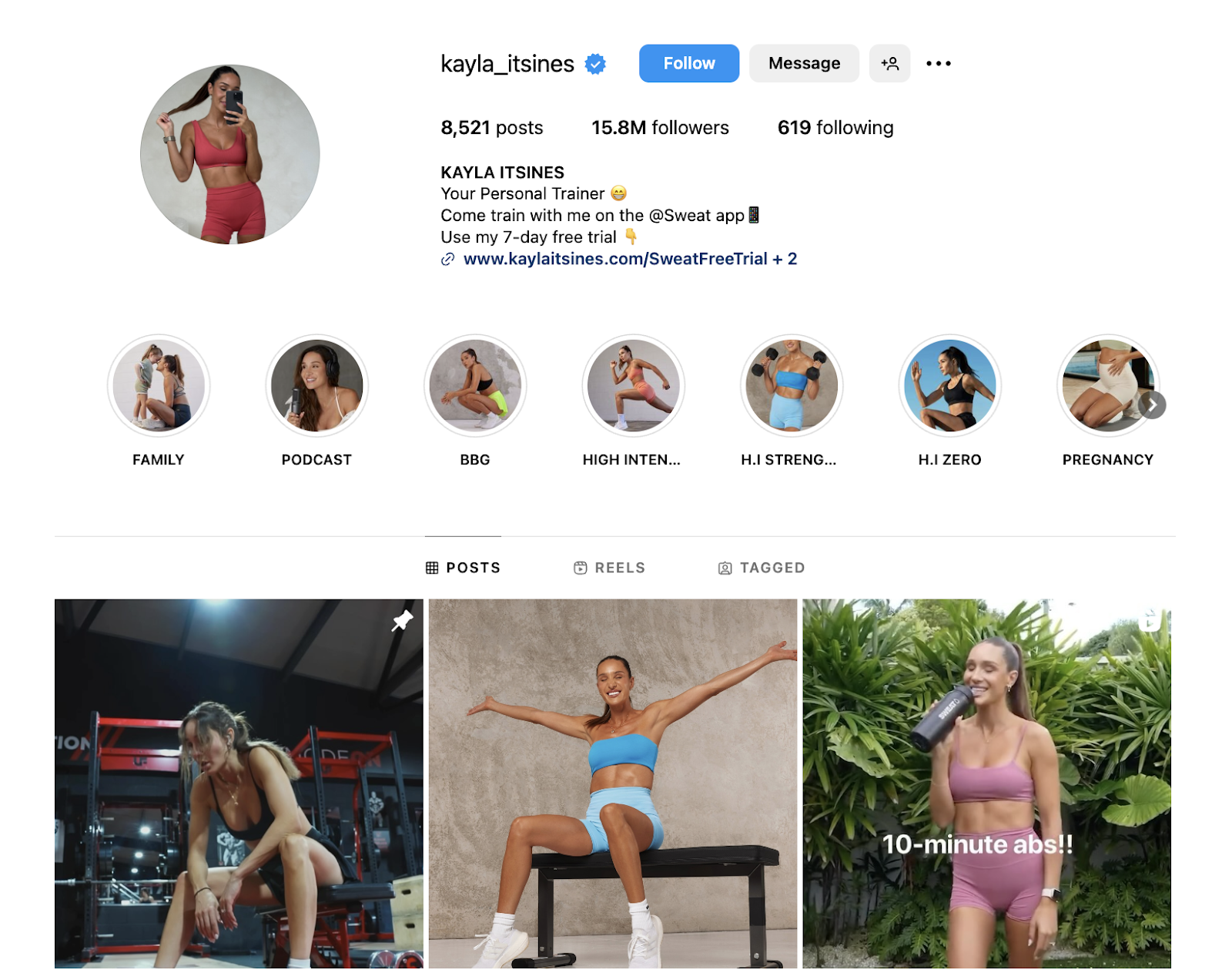
Podcasters
There are currently around 3 million active podcasts in over 100 different languages. At the front of any of these is a ‘podcaster’.
A podcaster is a host or show producer that discusses niche topics with the audience, on a podcast.
Podcasters are expected to entertain, inform, or interview listeners, sharing their recordings via platforms such as Spotify, Apple Podcasts, SoundCloud, and YouTube. Podcasters make their money via advertising and paid features. If you’ve heard about Squarespace, it was probably on a Podcast.
For example, take a look at The Adam Buxton Podcast. His podcast features adverts at various points in the episode, including the outro.
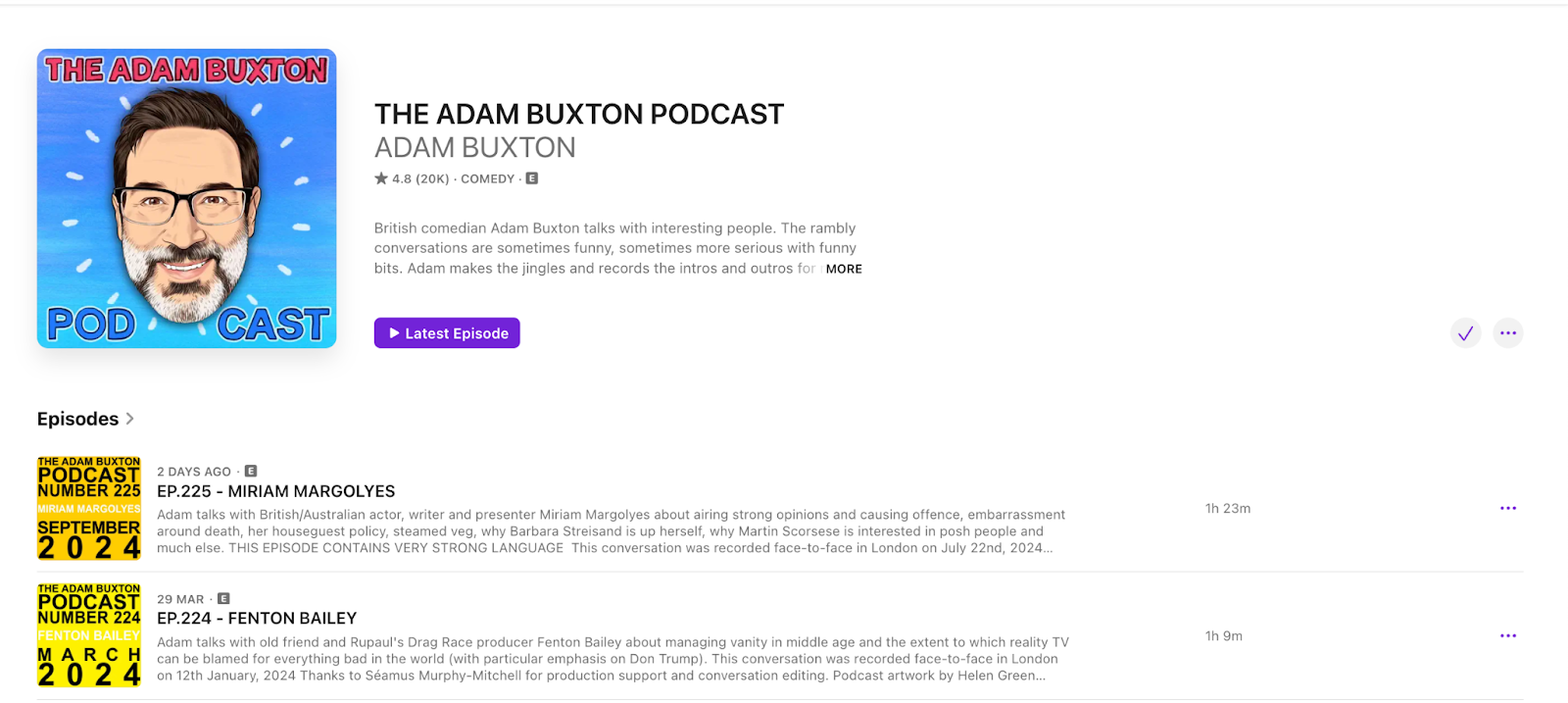
Vloggers
Twitch streamers, YouTubers, and TikTok creators all fall under the ‘vlogger’ category. These content creators share videos about their niche interests, personal experiences, and purchases.
Vlogging content can be live or edited, often featuring collaborations or even full production teams. Online video content has become so popular that 41% of Americans say they spend time watching it instead of watching TV shows or movies on streaming platforms.
The obvious example is MrBeast. His videos constantly promote his own products and collaborations, from ‘Dude Wipes’ to ‘Feastables’.
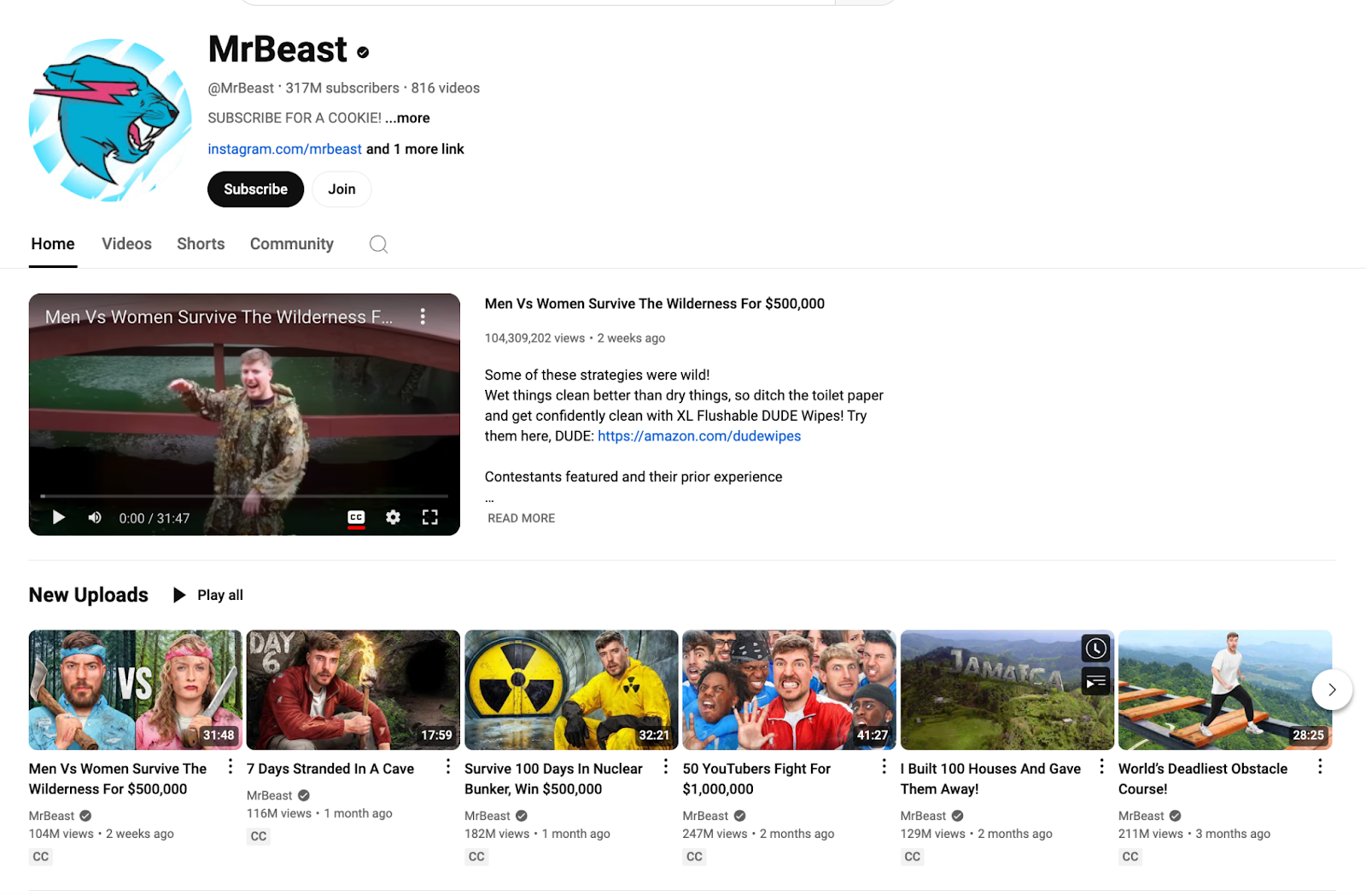
Bloggers
Blogging is another form of content creation. There are around 600 million active bloggers, proving that the sector is still thriving despite facing considerable competition from the above-mentioned rivals.
Bloggers write on personal websites alongside photos to educate and entertain, and often publish long-form content making their money via ads, affiliate links, and sponsorships.
For example, Chiara Ferragni’s ‘The Blonde Salad’ blog has ad banners and countless affiliate links in her review articles.

What Isn’t a Content Creator?
Content creators should not be mistaken with content marketers.
The two worlds closely overlap and you may even be better suited to being a content marketer.
But, they are not the same.
Content marketers work for others. They promote products, services, and brands. For example, I’m currently being a content marketer by writing this blog on behalf of Whop.com. I’m not being a content creator, as I’m not working for myself and building a public persona (we’ll leave that task to my mediocre Instagram accounts).
How Do Content Creators Get Paid?
We've already touched upon how content creators can earn a living - let's take a closer look at the various revenue streams:
Paid advertisements
Advertisements see the creators receive payment in exchange for displaying brand logos, products, or banners on their profiles and websites.
Streamers, YouTubers, and bloggers use this most, taking advantage of the built-in ad systems of YouTube, Twitch, and advertisement platforms.
Affiliate links
Affiliate links are common throughout every type of content creator; creators share a link to a product or service, receiving a commission for each sale as a result.
One-third of Americans say that content creators influence their purchasing decisions! So it's no surprise the affiliate market is worth an estimated $14 billion.
Sponsorship
Sponsorships can include collaborations and ongoing deals in exchange with featuring products, such as always wearing a brand of sneakers in their videos.
Memberships
Memberships are used by popular influencers to provide content only accessible behind the paywall. Platforms like Whop are perfect for memberships as you can create private communities with multiple ways to interact with your group.
Products
Content creators can also cash in on their following with digital and physical products. From stickers and t-shirts to apps and exclusive live streams, these revenue streams can be very profitable.
How Much Do Content Creators Earn?
With nearly 200 million active content creators, there’s a broad range of unbelievable success stories and projects that make nothing at all. Only 50% of them make money from their content.
But let’s look at the data.
- According to LinkTree, most content creators (66%) consider themselves part-time creators.
- Less than $500 per year: 72%
- $500 to $5k: 17%
- $5k and $10k: 5%
- $10k and $50k: 4%
- Over $50k per year: 2%
How Much Work is Required to Make Money?
The data also shows that time spent doesn’t necessarily correlate to higher earnings. While you’ll need to work hard to get the ball rolling, some of the most successful content creators don’t even spend 10 hours per week on content creation!
- 53% of under $100 per year earners spend less than 5 hours per week on content creation.
- 32% of $100 to $10k per year earners spend more than 10 hours a week.
- 52% of $50k to 100k per year earners spend less than 10 hours per week.
- 48% of $100k to 500k per year earners spend more than 10 hours per week.
Full-Time Creators
- Over $50k per year: 12%
- Less than $1k per year: 46%
Part-Time Creators
- Over $50k per year: 3%
- Less than $1k per year: 68%
How Do I Become a Content Creator?
A lot of content creators go on crazy journeys to achieve the success they boast about, but fundamentally it all starts with a strategy. Here’s a look at what’s required to get the ball rolling:
1. Find Your Niche
If you want to become a content creator, then you probably already have a subject in mind. But it’s wise to make this as niche as possible. You can always start to branch out into other areas later on.
62% of content creators report that specializing in a niche is helpful for engagement and reach.
To find your niche, consider what you’re an expert in or what you can offer better than others. It’s also fine to experiment and land on something that connects and resonates.
Take Francis Bourgeois for example. He’s not just a travel influencer; he’s a British railway enthusiast. He first targeted a core group of trainspotters and gained a following that soon claimed national fame.

2. Learn About Your Audience
Take some time to understand your audience so you can communicate with them as best as possible.
That doesn’t mean being unnatural, but consider the types of content your target audience is likely to use - such as reels, blogs, long-from videos, or even just photos. Then, you can tailor your content for maximum effect!
It’s also wise to target a passionate small audience first, rather than chase big follower counts or brand collaborations from day one.
3. Develop Your Personality and Style
While we all have our passion topics, we return to our favorite content creators because of their personalities.
To some people, charisma comes easily. To others, it takes time to refine. This is especially true when you’re performing in front of a camera.
Don’t beat yourself up, it’s normal for this to take some time.
- What makes you unique?
- What do you like creators you consider an inspiration?
- What are the defining elements of your personality and content?
Think about everything from the aesthetic choices (such as colors and fonts) to the tone you talk with and the messages you want to convey.
Just remember not to lose the aspects of yourself that make you you. Audiences tend to be put off by a lack of authenticity.
A great example for me is TheTimTraveller. There are tons of YouTube travel vloggers, but few offer the humorous tone that Tim provides. His editing and personality fully embrace geeking out. It’s clear he’s unafraid to be himself and it gives a wholesome charm.
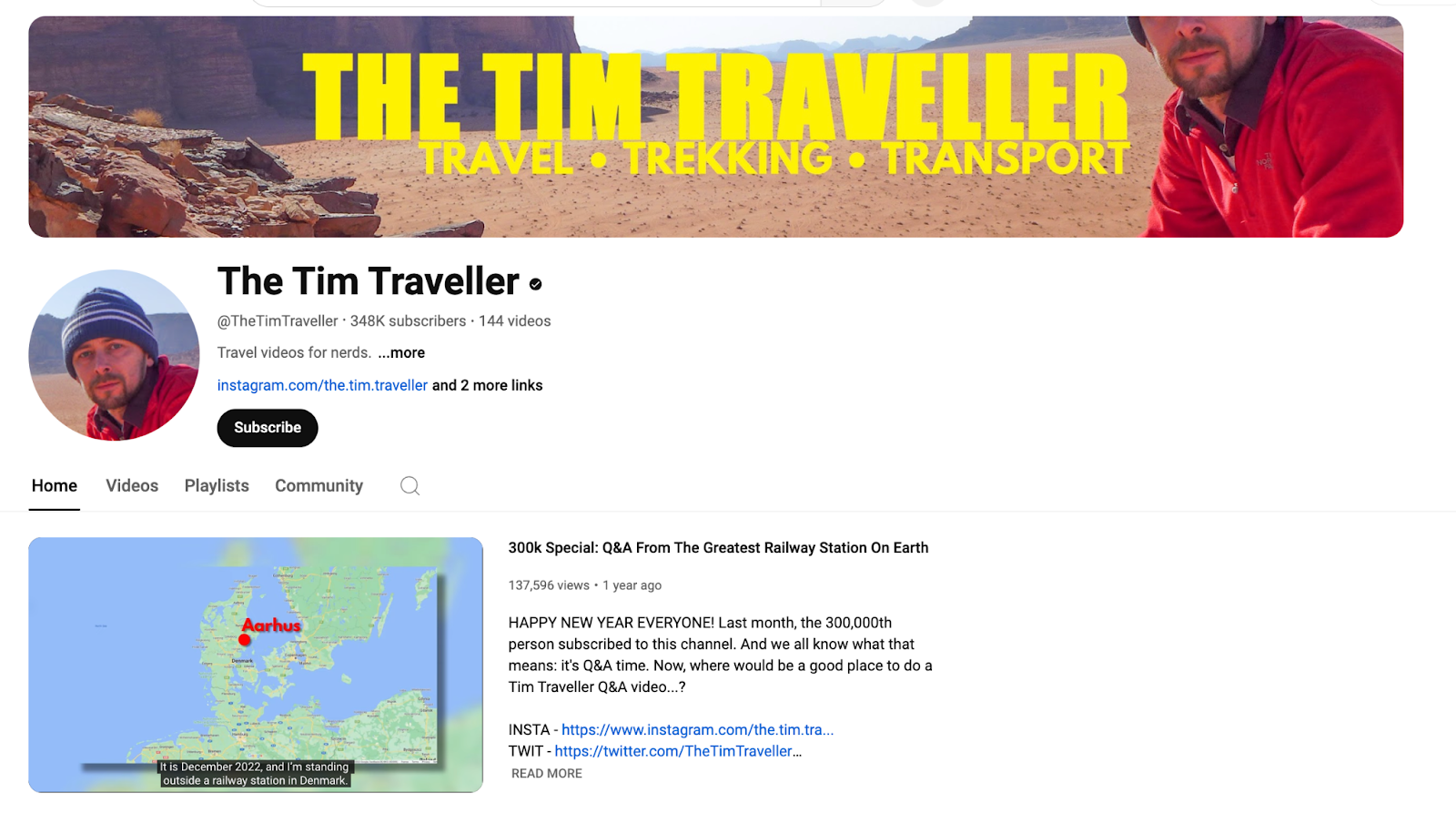
4. Brainstorm
There’s one thing that a blog like this can’t teach you - creativity. Coming up with great ideas for your content is what makes a great content creator… great!
We advise you to brainstorm and note down every idea that comes to mind. You can decide which are good and bad later, but never stop that flow of creativity from coming out.
If you need some inspiration, watch the content creators that inspired you in the first place or go check out some new ones.
5. Choose Your Platform
Consider what should be your primary platform. This could be related to your audience and niche.
Older generations are typically attracted to blogs and Facebook. While Gen-Z is all over TikTok, Twitch, and Instagram.
58% of creators produce 2-4 types of content, such as blogs, videos, and images. So it’s also wise to consider how you can exploit multiple platforms, even if it's a secondary format.
For example, perhaps you share long-form videos on YouTube and then promote snippets on TikTok. Consider what works best and prepare for some trial and error.
Here’s a quick breakdown of what typically works best:
- Facebook:
- 25 years and older
- Boomers
- Photos, links, and reels.
- YouTube:
- Gen-Z and Millennials
- Long-form content
- Vlogs
- Reels
- Instagram
- Gen-Z and Millenials.
- Reels
- Question and polls
- LinkedIn
- 40 years and older
- Professional fields
- Blogs, links, and discussion.
- X (Twitter)
- 25 years and older.
- Discussion, humor, and photos.
- TikTok
- Gen-Z and Kids.
- Reels
- Humor and challenges.
- Snapchat
- Gen-Z and Teens
- Reels
- Challenges and trends
6. Create a Schedule (and Stick To It)
Without a schedule, it’s very easy for days (or even weeks) to pass without posting. Soon, you’ve alienated any potential interest you had growing. So, take some time to plan for some consistent posting.
Try to go as far into the future as you can. We advise at least two weeks; that way you’ll always have some time to tweak and readjust as needed.
You can use tools like SubStack and other content schedulers to plan out and stay on track. But many find a whiteboard by their desk works just as well!
7. Decide What You Need to Invest In
All content creators need tools. A smartphone is a bare necessity. But to push the quality of your output, you’re going to need to add some other tools to your repertoire.
Once you’ve imagined your ideal content, think about what’s needed to create and edit it.
Perhaps you’ll need a microphone, audio interface, camera, GoPro, or editing software. Or maybe you’ll need a ring light or a studio makeover. Bloggers might need a Grammarly Pro subscription or a new keyboard. You might even need to consider hiring editors or professional photographers.
Taking time to ensure you’ve got the funds and tools in place will prevent delays that destroy momentum later on.
8. Get Creating
Enough chit-chat. This is what you’re here for! Go create!
At the heart of every content creation story is a passion to create and shark. Remember to be yourself, be passionate, and be unafraid of mistakes. They’ll happen regardless and they happen to everyone.
The more you create and share, the better you’ll become.
9. Track and Review
Publish. It’s out in the world! A terrifying and exciting moment all at once.
But your job isn’t over yet. Now it’s time to track and learn for future production.
What posts are getting the most views? What’s working and what’s not? Did people love a specific type of content? Did the time you shared it have an effect? Make notes and factor them in for next time.
But remember, don’t make the mistake of valuing criticism over love. The haters are gonna hate (as someone once said), but you’re not making it for them!
10. Create a Portfolio
Once you’ve got some content out there in the world and a following building, then it might be time to think about money.
One way to do this is through brand deals, like ads, product placement, and affiliate links.
A portfolio is a great way to enable this, as it gives brands a chance to see what it is you offer and can provide them. It also looks like you take things seriously from a business perspective.
A portfolio can be a simple one-page website that lists where you’ve been featured, who you’ve worked with, and your achievements to date. Be sure to update it from time to time and upon notable milestones.
The Key Phases of Being a Content Creator
While you could go viral straight away, it's unlikely that your content creator career will start and continue in that manner. Here's what you can expect as a content creator.
Early Days
Behaviors
- Inconsistent fan engagement.
- Content created when needed.
Motivation
- Self-expression.
- The need for social connection.
Opportunities
- Build viewers and get feedback.
Growth
Behaviors
- Consistent growth.
- Focused strategy and consistent posting.
Motivation
- Validation.
- Building a community.
Opportunities
- Secure a community and collaborations.
Going Pro
Behaviors
- Monetization and partnerships.
- Brand identity.
Motivation
- Revenue.
- Make a name for yourself.
Opportunities
- Income streams and rapid growth.
Creator Empires
Behaviors
- Full business operation.
- Multiple income streams.
Motivation
- Career longevity.
- Brand growth.
Opportunities
- Personalized deals, subscriptions, and large partnerships.
Key Tips for Improving as a Content Creator
The journey doesn't end when you start publishing your content. The landscape is constantly evolving, and you have to review and update your style to keep on top of latest trends. In order to really succeed as a content creator, follow these tips:
Be Patient
It’s easy to want to rule the world on day one. But give yourself time to grow and prepare.
There will be tough days and slow weeks. But stay consistent and gradual growth will arrive.
Build a Team
Once you have the opportunity to build a team, take advantage of it. You don’t need to do everything alone.
Teams come in many different forms. To some, it can be an editor or a photographer. To others, it’s a support team that joins in with collaborations.
Stay Niched
Once your niche has been found, don’t stray. It’s going to alienate your core audience if you go from fashion and beauty to gaming suddenly.
Of course, you can branch out later but don't make a sudden switch unless you're prepared for a loss of followers.
Collaborate
Collaboration comes in many forms, but it can help grow your following to new levels. There are some things you simply can’t achieve alone too.
If you find someone you get along with and can trust, nurture that relationship by collaborating on suitable projects.
Scratch my back and I’ll scratch yours.
Stay Informed
If you’re not in the loop with your chosen industry, then you’re going to miss out on trending topics and memes.
Don’t make that mistake. Watch other creators, follow relevant accounts on social media, and remain a fan of your niche.
Podcasts, newsletters, blogs, and YouTubers are great ways to stay informed.
Stay Active
Everyone deserves and should take breaks. So don’t take this information the wrong way.
However, you need to stay active and post consistently. This keeps your audience engaged and keeps the algorithms happy (much to the pain of content creators).
Get in the habit of daily creation. This can be as little as jotting down an idea, on a busy day. But just keep those creative juices flowing!
Track Your KPIs
Bleh, metrics. They’re rarely fun. But they will help you out in the long term.
Key Performance Indicators (KPIs) are metrics that you choose to compare how you’re doing versus your goals.
For example:
- You currently have 3 subscribers on your YouTube channel.
- In two months, you’d like to reach 100 subscribers.
- You’ll check your subscriber count every week to see if your current strategy is heading toward that goal.
Care for Your Community
The numbers are nice. But fans are the game changers. They make you feel 100 feet tall and can convert into money.
Creating a community will make the whole experience far nicer. So embrace it and engage with your followers, comments, and emails. Share polls and ask for their input.
Remember to never take them for granted. One day, you might even be able to share merch or host events!
Brands love creators with communities, especially those that can give them a good reputation.
Network
As with most things in life, who you know is very important.
It’s easy to get stuck in a little bubble online, but remember to connect with those you encounter (both online and in the real world).
You can go to conferences, meet-ups, workshops, and conventions. You can even consider making business cards so people don’t forget you.
These connections can result in partnerships and collaborations. It only takes one special connection to propel you forward.
Stay organized
Treat your content creation as if you’ve started a business. As a business owner, you’ve got to keep everything organized - from your finances and time to feedback and connections.
Tasks and message backlogs can grow fast. And before you know it, it's all too much and you lose momentum. Don’t let that happen to you!
Enjoy It!
There’s been a lot to think about here and a lot of responsibility. That’s not fun, we know.
But remember to enjoy it! Content creation is packed with potential and opportunities that can change your life - from having viewers merely connect with your passion, to life-changing partnerships and adventures.
For your own sake, go wild, and don’t hold back! Your audience will pick up on your enjoyment too.
Who Are The Most Popular Content Creators?
Are you looking for some inspiration? Here are ten extreme examples of content creators who have built content-creating empires.
1. MrBeast
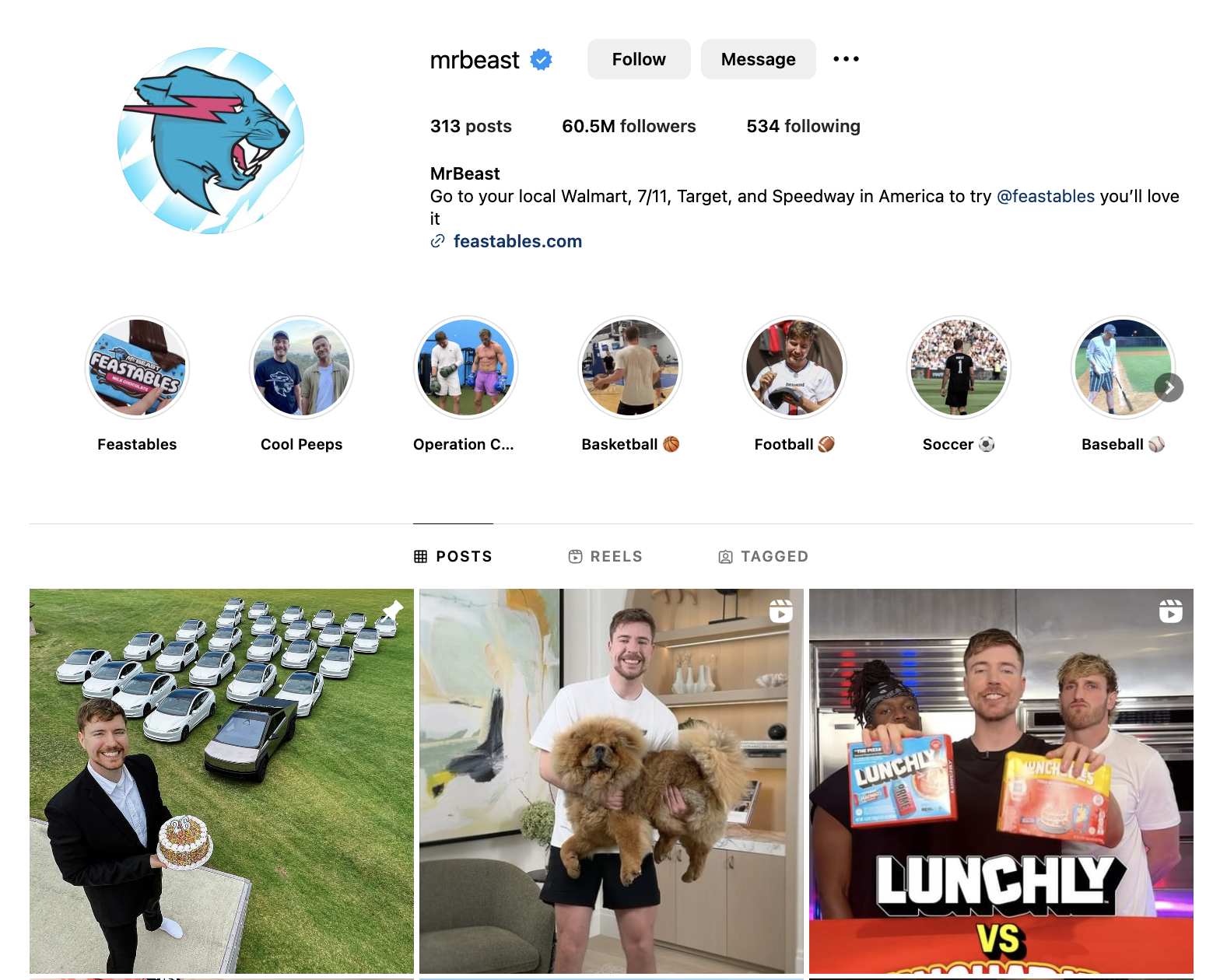
Jimmy Donaldson, a.k.a ‘MrBeast’, has over 316 million YouTube subscribers. That’s more than nearly the entire U.S. population. Having put significant investment into the translation and dubbing of his videos, he’s a household name across the globe.
His claim to fame is built largely on videos with a philanthropic approach, by giving away cars, houses, products, and large sums of cash to those in need and winners of his entertaining games. But in recent times his fame has faced controversy for his shows’ treatment of contestants.
Today, MrBeast also sells a large merch line and the headline-grabbing ‘Feastables’. Forbes says he’s made $82m.
2. KSI
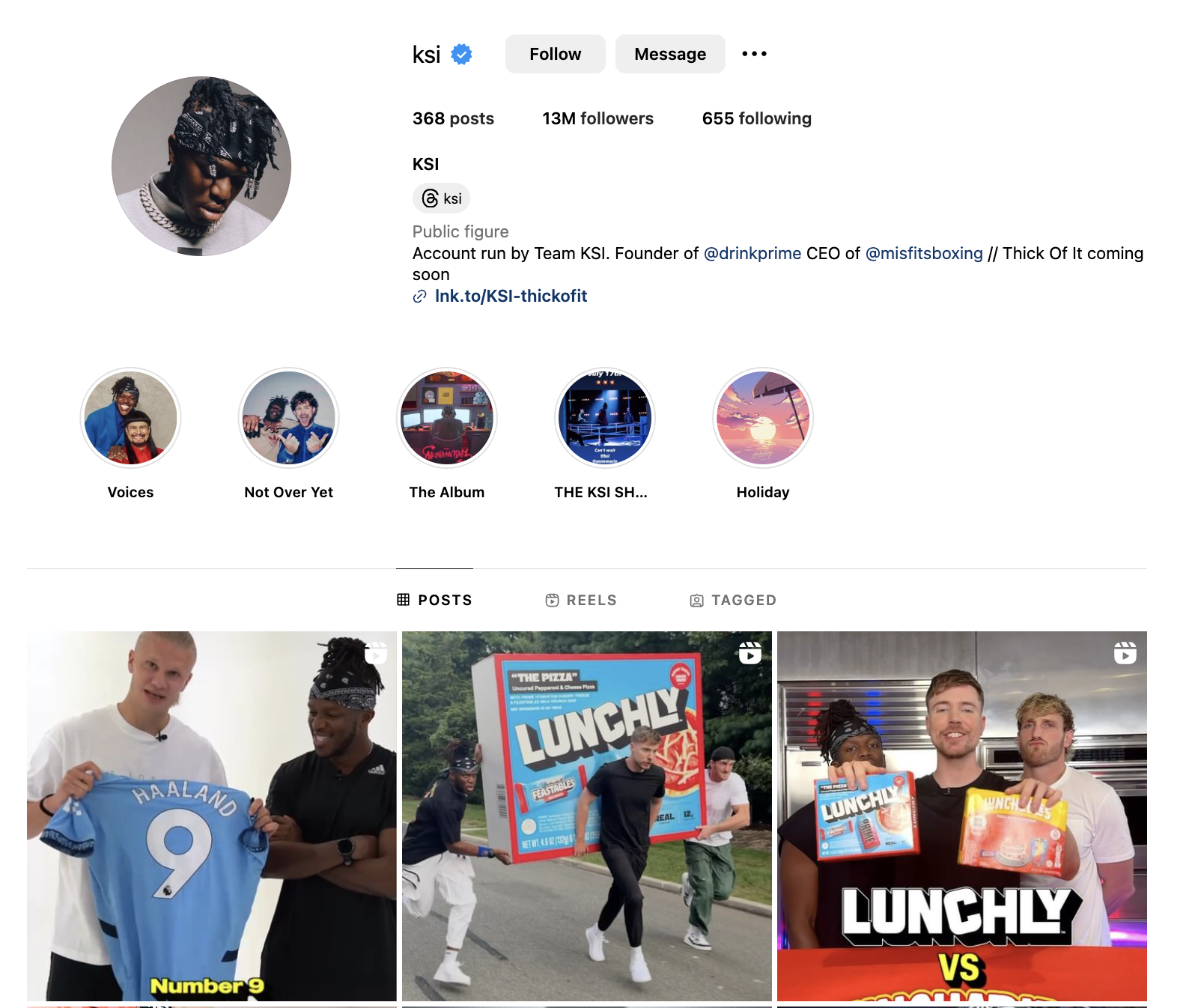
Olajide Olatunji started out recording footage and reactions to his adventures on games like FIFA. Over a decade later, he’s now known for boxing, rapping, and being the face of the PRIME energy drink.
No stranger to controversy, he has built a huge online following of over 112 million.
3. Jake Paul
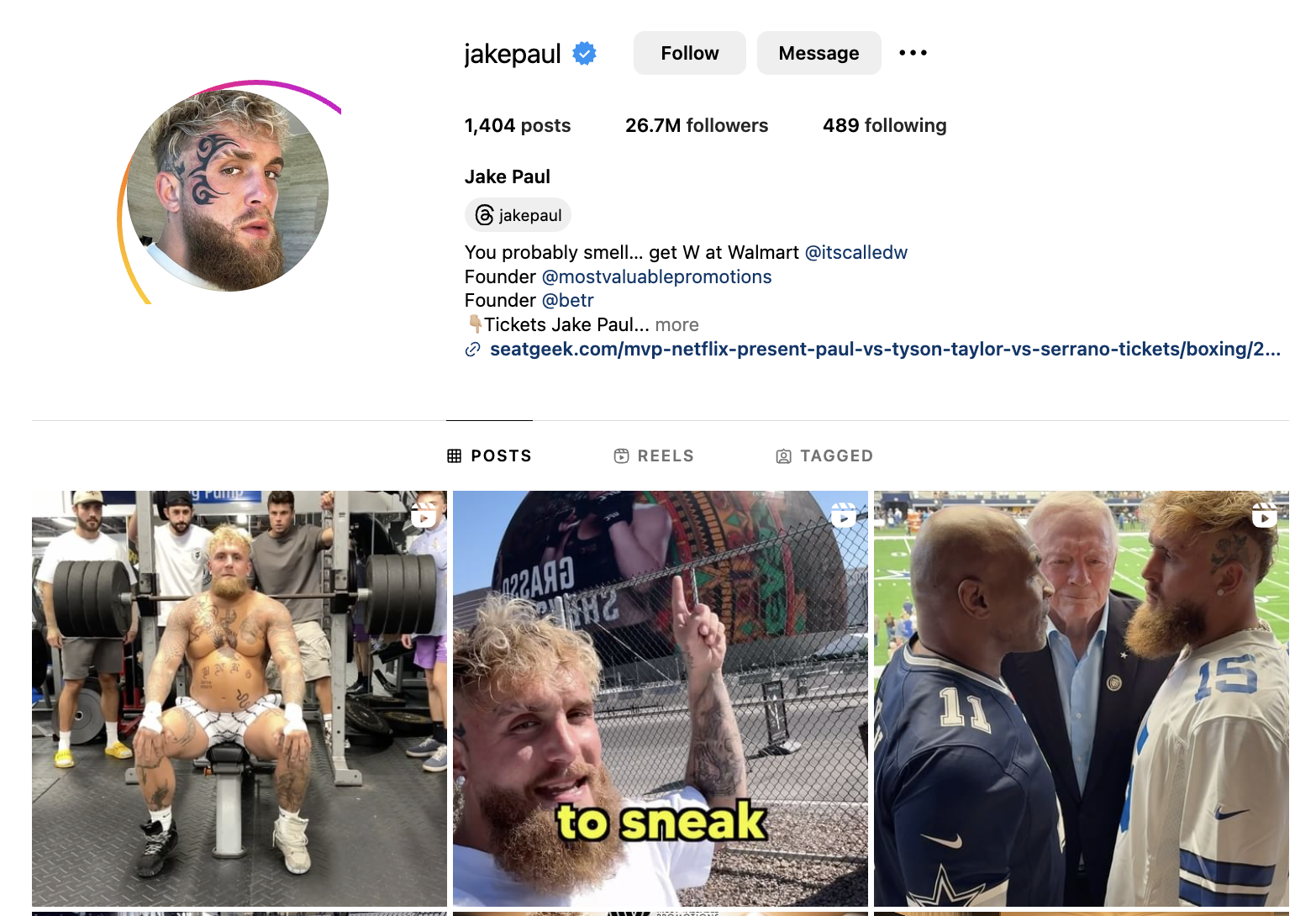
Jake Paul divides opinion like few others, with a 66 million strong following, various scandals, allegations, and SEC charges to his name.
His videos are just one part of his output, with boxing, MMA contracts, and start-ups propelling him to mainstream success.
4. Rhett and Link
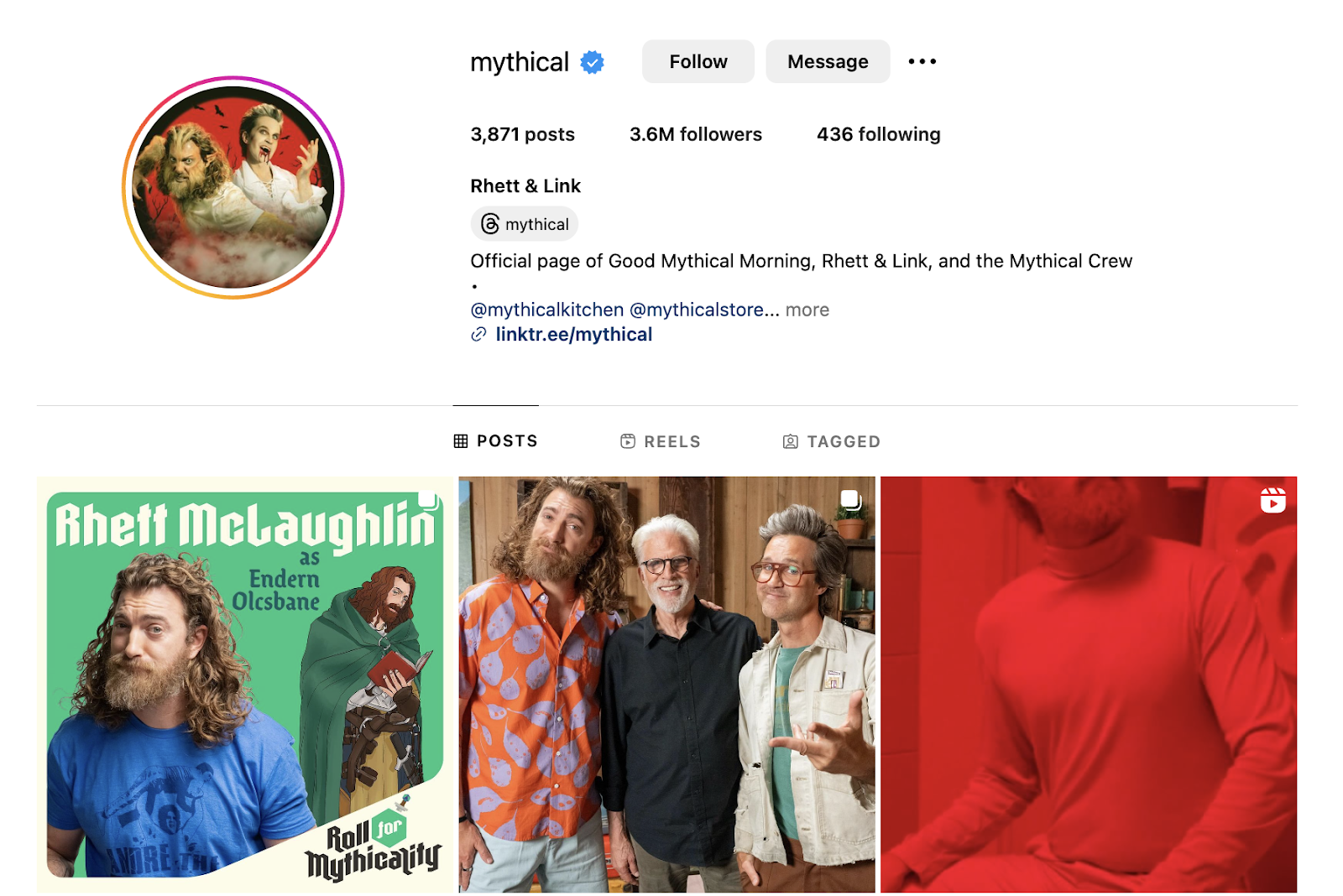
Two former engineers, Rhett McLaughlin and Charles Neal III, have been posting comedy shows on YouTube since way back in 2006.
Now, they own an entertainment company, Mythical, that produces YouTube series including ‘Good Mythical Morning’. Podcasts, tours, books, and TV shows have also helped them amass over 51 million followers.
5. Charli D’Amelio
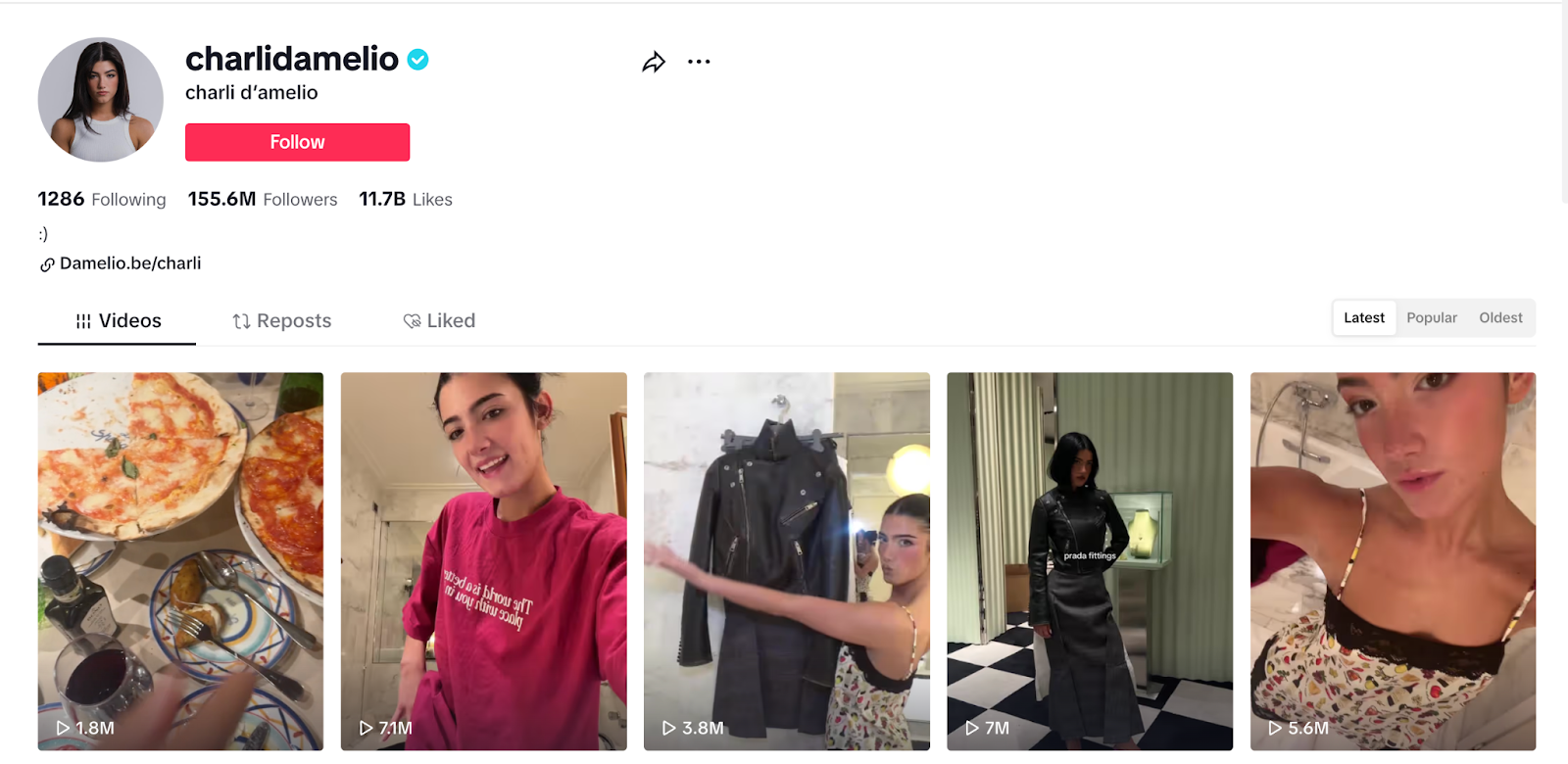
Influencer Charli D’Amelio is continuing to dominate TikTok, having become the face of Prada and receiving sponsorships from Amazon, CeraVe, and Kim Kardashian’s SKIMS.
As of 2024, she has a fragrance on shelves in the U.S. and Europe, all as a result of her social media game - which has over 213 million followers.
6. Logan Paul
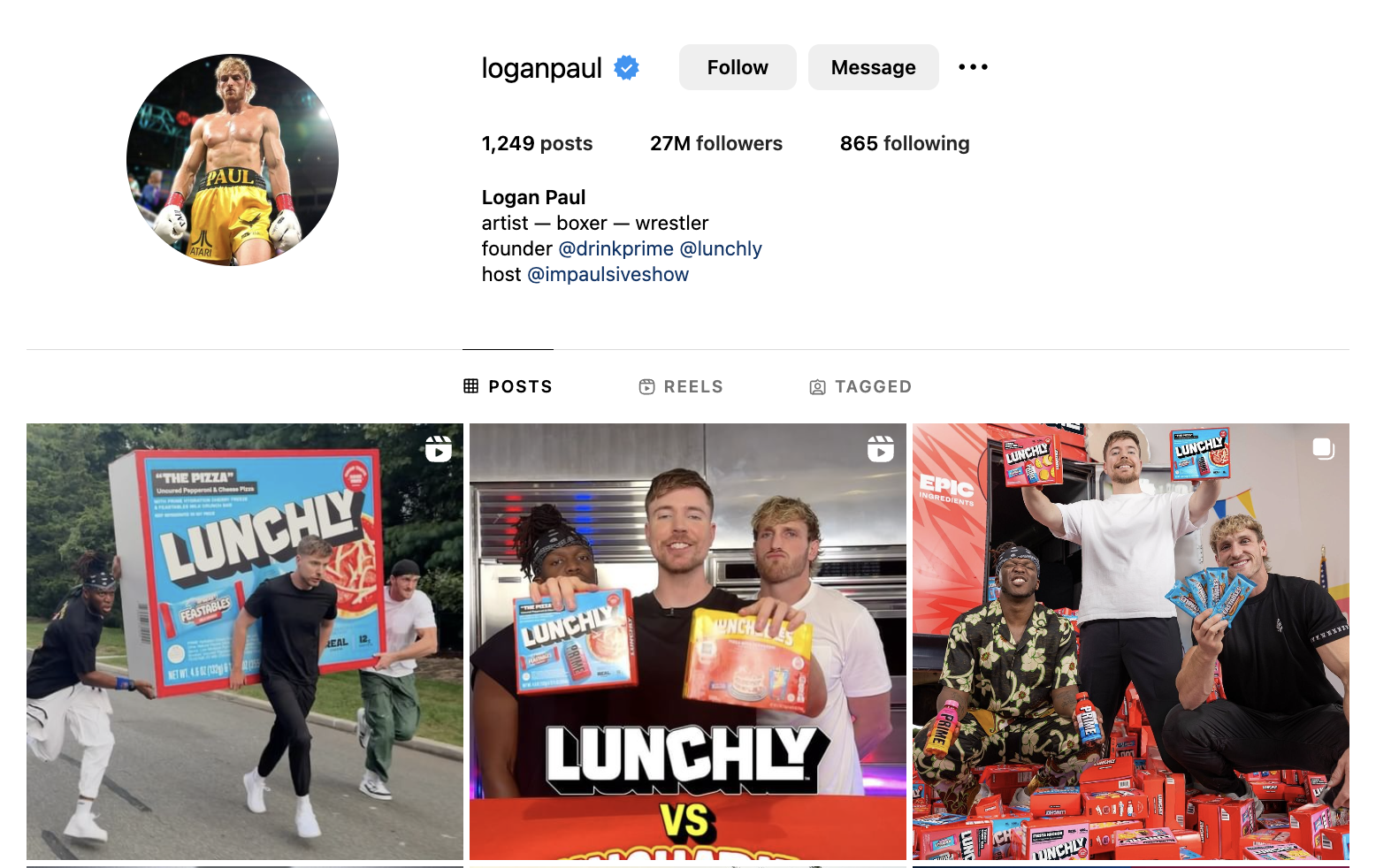
Logan, the brother of Jake, has over 74 million followers having gone viral on Vine (rest in peace, our beloved), before capitalizing on his fame on YouTube.
Paul has faced considerable controversy, particularly after showing a dead body in Japan (which led to YouTube demonetization for a brief period). Today he is a podcast co-host, PRIME energy promoter, and WWE wrestler.
7. Emma Chamberlain
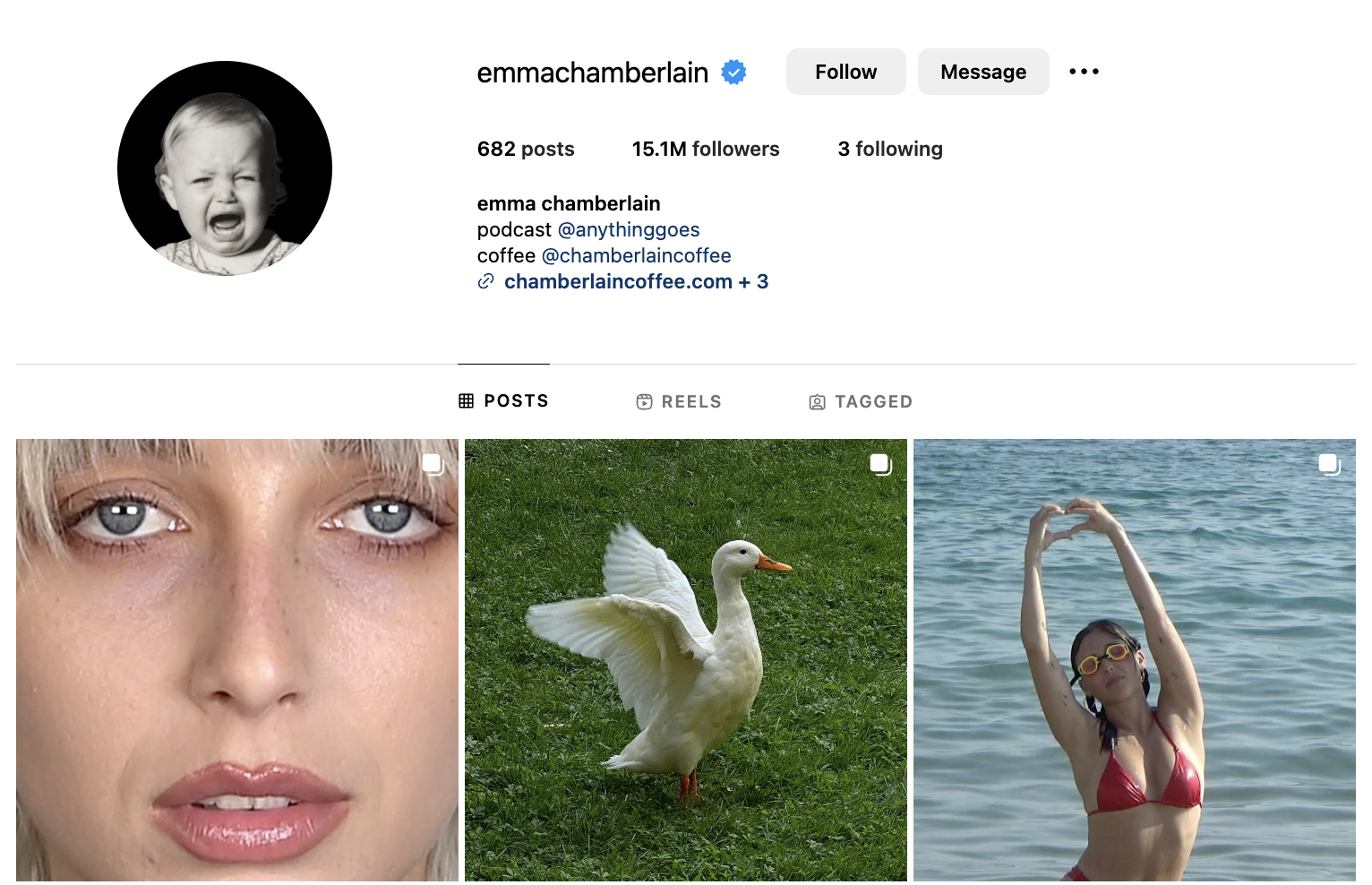
With 28 million followers, Emma Chamberlain has come a long way since she dropped out of high school and started filming videos in her mom’s home.
With a fun approach to fashion, she once secured a fashion deal with Louis Vuitton and has since partnered with the likes of Cartier, Canon, and Lancome. If that’s not enough, she hosts a podcast and has her own Coffee company.
8. Alexandra Cooper
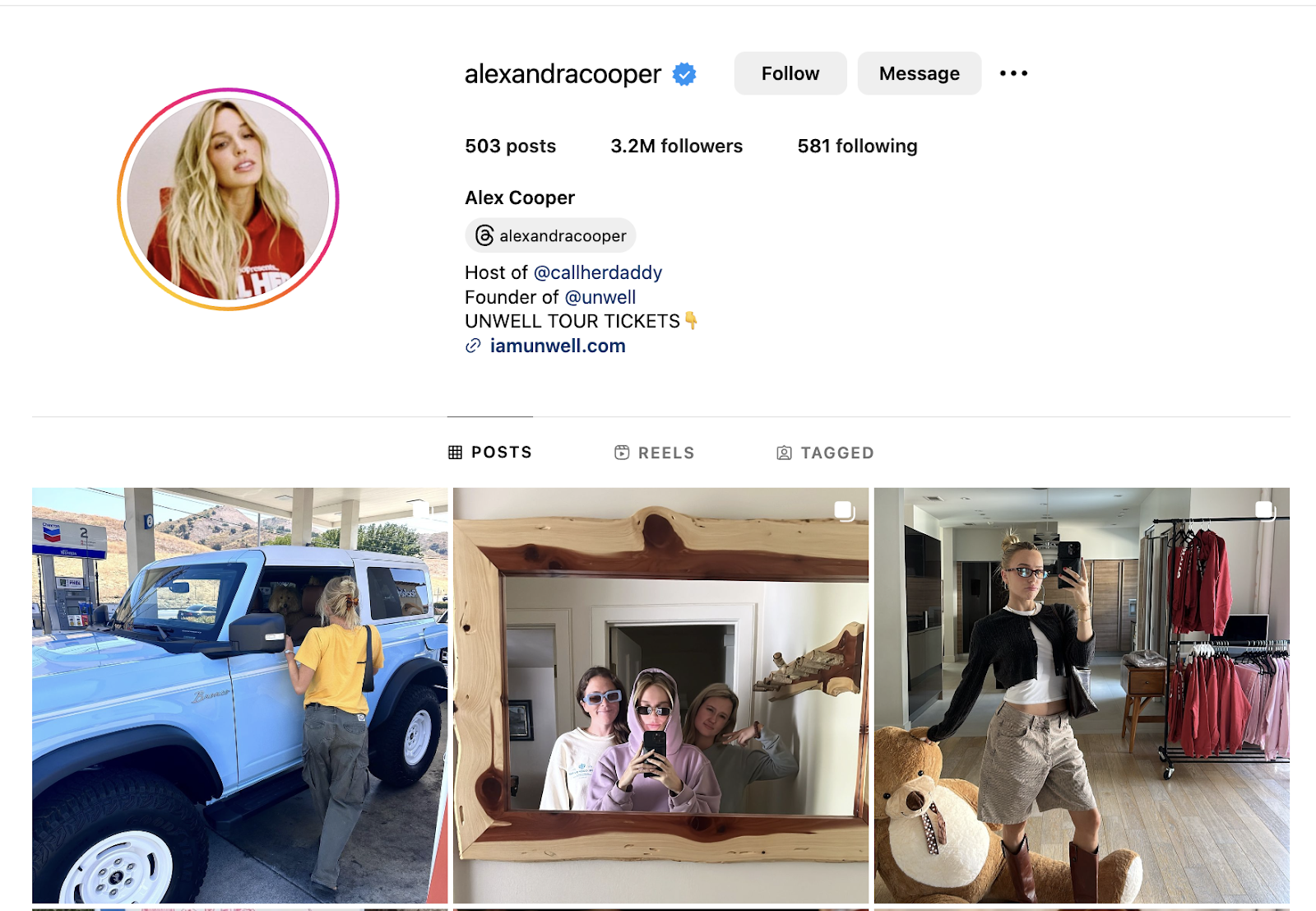
Alexandra Cooper has over 5 million followers as a result of her relationship and sex-based podcast, ‘Call Her Daddy’. She is considered Spotify’s most successful female host, with a deal worth over $60 million. She also co-founded a Gen-Z-focused media company called ‘Trending’.
9. Huda Kattan
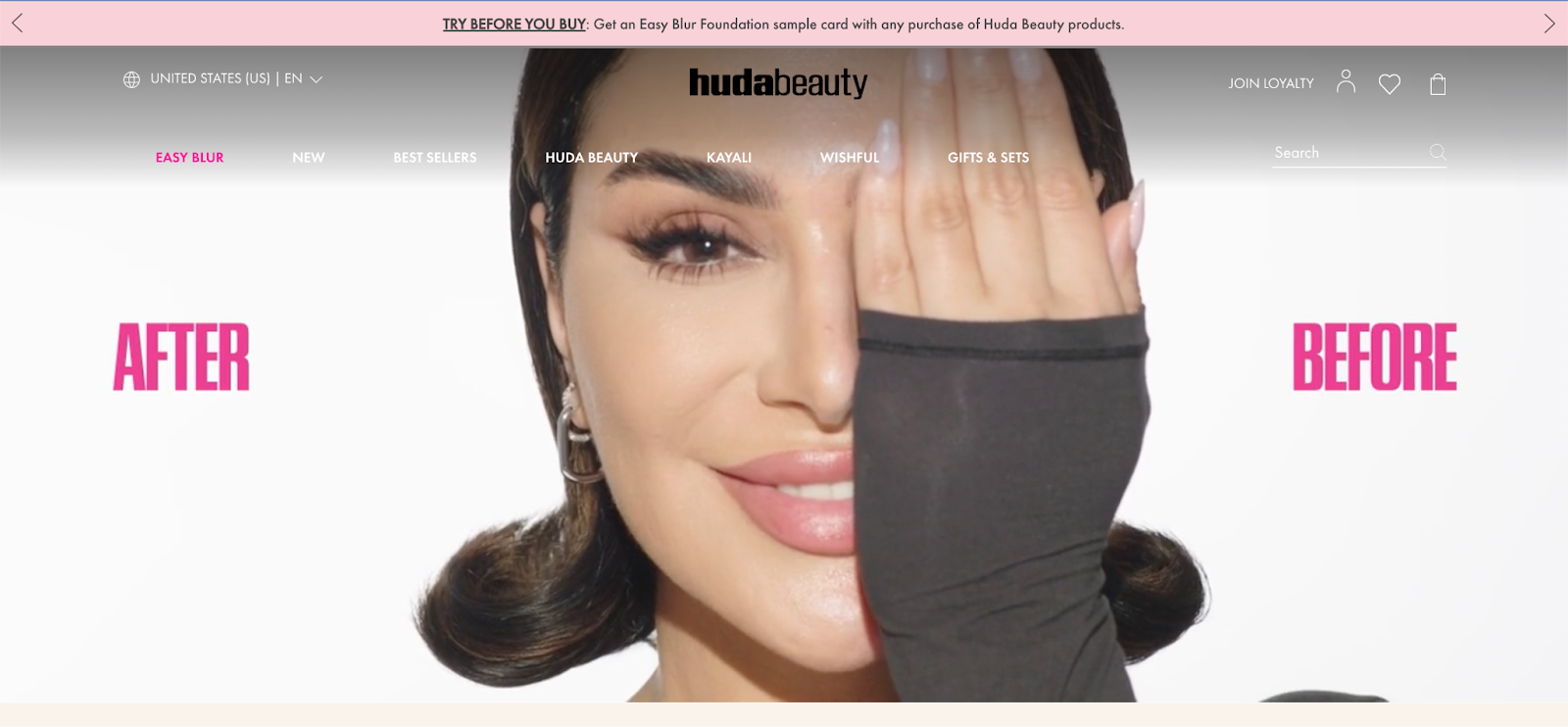
Beauty blogger, Huda Kattan, launched a WordPress blog called ‘Huda Beauty’ back in 2010. After years of celebrating diversity in her field, she later launched her cosmetic beauty brand and became a global beauty icon. She has a net worth of over $400 million.
10. Khabane (Khaby) Lame
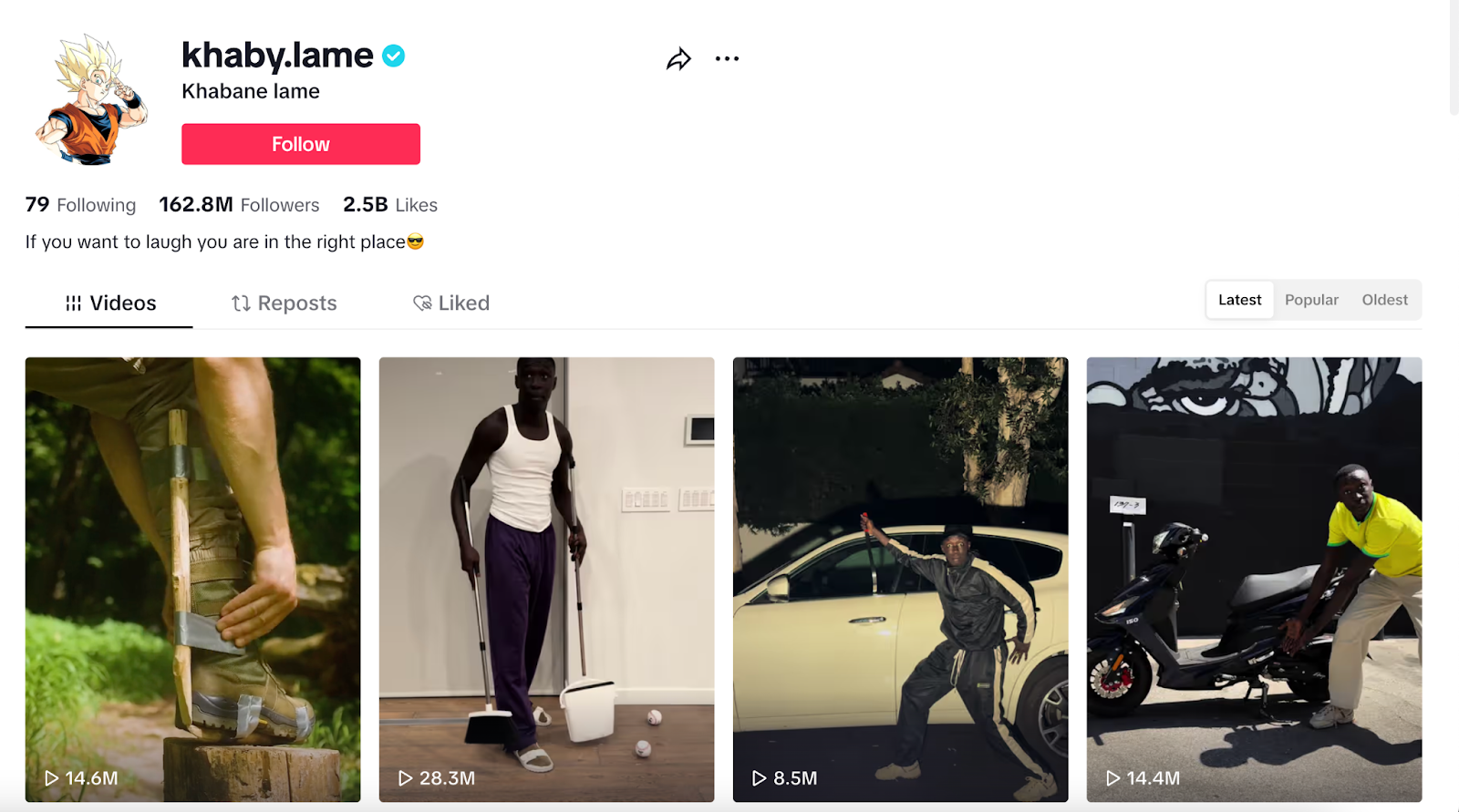
You’ve probably seen Lame’s reels; he doesn’t say much but instead reacts to other reels and situations that he finds absurd. Since 2019, he’s acquired over 244 million followers and reportedly makes $750,000 per product placement on his socials.
Monetize Your Content With Whop
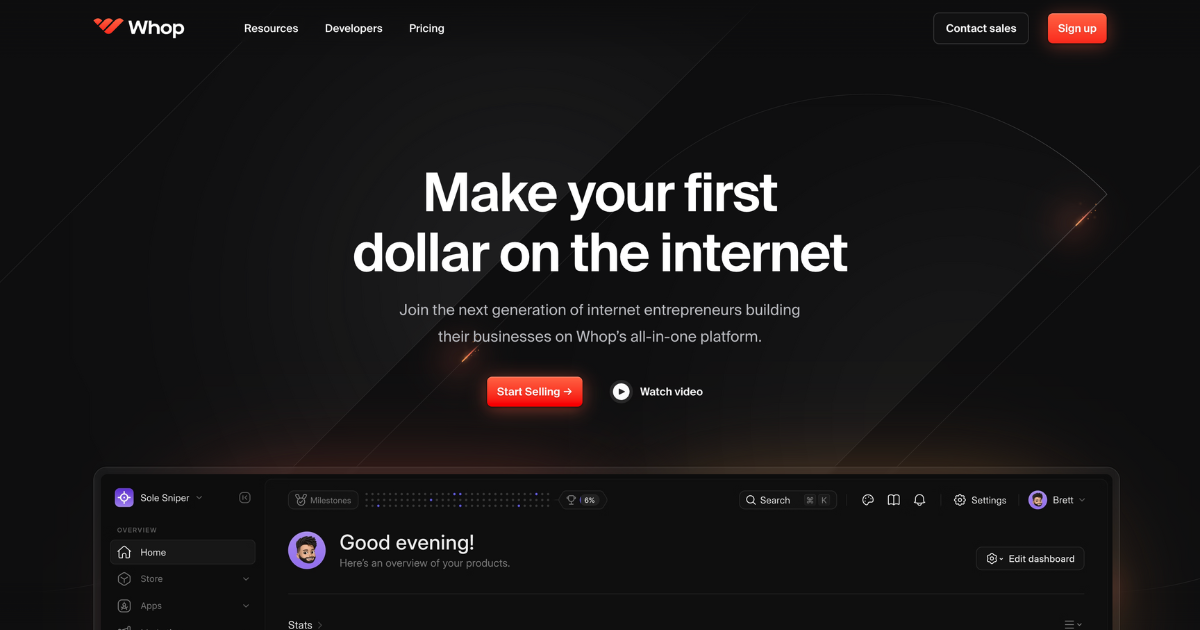
Whether you’re starting a blog, YouTube channel, TikTik account, or any other kind of online presence, you’ve got a great opportunity to make money as a content creator.
However, when it comes to actually making money with these platforms there are countless hoops to jump through and guidelines to navigate. If you want to be paid natively through a platform like YouTube or Instagram, you have to meet certain thresholds and ensure before you can monetize.
But there's an easier way.
With Whop you can create one central hub for your followers. As we mentioned, most content creators have 3 or 4 different channels - a newsletter for weekly updates, a TikTok for fun, short videos, a YouTube channel for longer-form content, and so on. As a result, such creators have multiple revenue streams, yet their audiences are spread over many different platforms.
Whop offers a great way to funnel your readers and viewers to an online hub where you can sell exclusive digital products, courses, files, streams, and even giveaways. You can also create a community in your whop with the chat app, forums app, and video calls app, giving you a paid VIP community for your fanbase,
Your whop is designed by you. The easy-to-use interface makes it a breeze, from creating your whop, to handling your income, to setting up payments.
Join Whop today and start making money online.
FAQs
Do Content Creators Have Qualifications?
Good news! You don’t need any qualifications to be a content creator. It’s all on you and no one’s going to come check your CV to see if you’ve studied the field.
However, in some niches, you may benefit from honing your skills via courses and training. It really depends on what you’re working on.
For example, you don’t need much training to show off your style as a fashion influencer. If you’ve got style, show it off. But if you want to be a YouTubefitness instructor, you may benefit from learning how to give exercise lessons.
Can I Be a Content Creator With No Experience?
Yes! Just look at the sheer number of younger faces rolling in followers the next time you browse TikTok.
On the other hand, very few content creators are overnight success stories. You’ll need to work hard and be prepared to learn on the job as you face ups and downs.


![40 Easy Ways to Make Money Online [2024]](/blog/content/images/size/w600/2023/11/20-ways-to-make-money-online--1-.webp)


